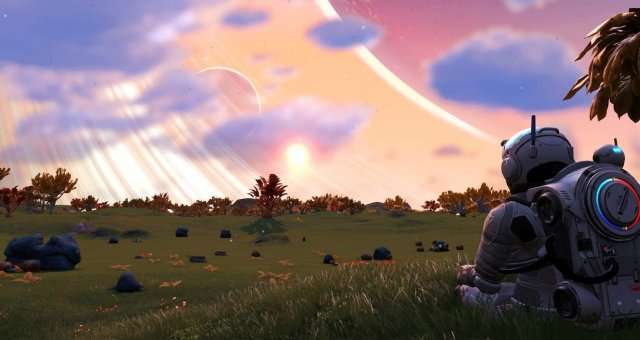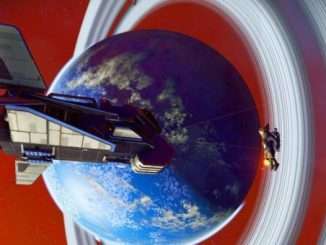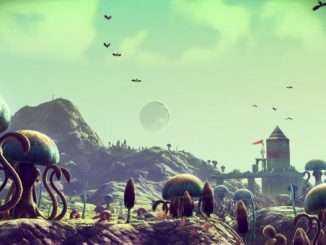
This guide is a quick reference to deciding if a frigate is worth buying.
Guide to Buying a Frigate
Purchasing a frigate involves analyzing numerous specifications. Determining a ship’s value can be challenging. While all frigates can be upgraded, some are pre-equipped with enhancements at the time of purchase. A frigate displaying high performance might have reached its upgrade limit, while a seemingly less capable frigate may possess greater potential for improvement.
This guide helps you understand how good a frigate can become.
We wrote this guide while choosing a Class-S Combat Frigate called the MV-7 Edogawa Prospector. There’s a picture of it nearby. We’ll use this ship as an example.

Statistics
Frigates have four main stats: Combat, Exploration, Industry, and Trade. These stats are very important. They decide if a mission succeeds or fails. Players should try to get the best frigates they can.
Game files show that any mission can check any stat. But missions mostly use the stat that matches their type. So it’s better to have good overall stats than to focus on just one.
A frigate’s stats come from three things:
- Its starting stats
- What it gains from leveling up
- Its traits
The final stat number is what matters most. But knowing how it’s calculated helps you judge how good a frigate can become.
A frigate’s type doesn’t change its stats directly. But it does affect which traits the frigate can get to improve its stats.
The MV-7 is a Combat Specialist.
Traits
All frigates have between one and five traits when purchased. All frigates will have five positive traits when they unlock their full potential.
Every frigate has a specialty trait. For most frigates, this is a +15 bonus to the statistic of its specialty. Support frigates instead get a -15 fuel cost reduction. These traits are always present on every frigate and have no bearing on a frigate’s overall potential.
Some frigates have negative traits, shown in red, that decrease their statistics or increase their fuel rates. These traits are always lost as the frigate gains levels. While they can be annoying, a frigate with negative traits can grow to the same heights as any other frigate. Even the worst negative trait will vanish and be replaced with a positive trait in time.
Other positive traits are fixed. Positive traits can improve statistics, speed expeditions, harden a frigate against damage, or decrease the total fuel cost of an expedition. Once a trait is assigned it is permanent, and cannot be lost or improved.
- Statistic improving traits can offer +2, +4, or +6 to the ship’s specialty or +1, +2, or +3 to other stats. This means that a +1 bonus, while nice, is forever taking a slot that could get a better trait.
- Fuel reduction traits are -2, -4, or -6 for most frigates and -3, -6, and -9 for support ships.
- All frigates can reduce expedition time by 1, 2, or 3 percent.
- Frigates can have multiple traits that provide the same benefit, but cannot have the same trait twice. In theory a single frigate can get two +6 bonuses to its specialty, but can never have three.
A ship with open trait slots or negative traits will eventually learn more positive traits. There is no way to know what those traits will be.
A ship with positive traits at time of purchase will have those traits forever. Ships with low-rated positive traits should be considered less valuable than ships with no traits at all, while ships with high-valued traits can make up for otherwise poor statistics.
The MV-7 has five positive traits, which can never change. It has a +6 bonus to Combat, a best in its specialty, and a +3 to Industry, a best in off-specialty. The other two traits, expedition duration and fuel cost, are the weakest examples of weak traits. This is a mixed bag.
Leveling Up
A frigate levels up ten times based on its number of expeditions. Each level-up adds one point to each of its four statistics and two additional, randomly assigned points, for a total of 6 points per levelup. Existing frigates already have these levelups added to their statistics, which makes them more powerful right now but may make them poor in overall potential.
Frigates can either lose a negative trait or gain a positive trait when they level up. Positive traits are never lost or upgraded in this process.
Fuel cost is not changed by leveling up, except by the removing of fuel-consuming negative traits.
Levelups occur at the following number of expeditions completed:
- 4
- 8
- 15
- 25
- 30
- 35
- 40
- 45
- 50
- 55
To be clear, the increases happen at these levels. A frigate that has completed exactly 8 expeditions has leveled up twice, as has a frigate that has completed exactly 14 missions.
The MV-7 has completed 27 missions and has leveled up 4 times.
Fuel Costs
Fuel costs are always expressed as a number of units per 250 light years. In planning an expedition, this rate is used to calculate the total fuel consumption of the fleet, then any fuel reduction traits are subtracted from that total, then finally the remainder is rounded up to the nearest unit of 50.
- Most frigates have a fuel rate between 8 and 12.
- Support frigates have a fuel rate between 2 and 5.
Small fuel reduction traits have limited value; they apply a flat reduction to the total and thus are often lost in the rounding. Support ships, with their larger traits and lower rates, are an exception to this rule.
Fuel increase traits affect the rate itself and can thus have a large effect, but like all traits will eventually be lost.
Frigates with a fuel rate above 10 or support frigates with a rate above 3 must have extraordinary statistics or traits to validate the expense.
Fuel rate can be increased by negative traits, which will vanish as the frigate gains experience. Other than that, fuel rate is fixed and a frigate never becomes more economical.
The MV-7 has a fuel rate of 8, the best a combat specialist can hope to have. It also has a weak fuel reduction trait, but that isn’t a factor in the ship’s worth because the trait’s effect is too small to matter in most circumstances.
Base Stat Total
When a frigate is generated it is given a starting value in each of its four statistics, which is then improved by levelling up and assigning traits. These starting values can be zero or even negative values. The hardest part of judging a frigate is in finding what those starting values are. More accurately, we judge a frigate by the sum of its starting values, which we call the Base Stat Total. Remember, any statistic can be useful on any expedition, so every statistic is valuable.
To find the Base Stat Total:
- Add up all four statistics; combat, exploration, industry, and trade.
- Subtract the value of each positive trait.
- Add the value of each negative trait.
- Subtract 6 for each levelup the ship has already had
The base stat totals observed have ranged between -5 and +14, with an average of 4 to 5.
The MV-7 has a base stat total of nine. Above average, but not super.
- 29 + 8 + 14 + 6 = 57
- 57 – 15 – 6 – 3 = 33
- 33 + 0 = 33
- 33 – (6*4) = 9
Final Thoughts
The MV-7 has a mix of good and bad traits, a good stat total, and excellent fuel efficiency. On this basis, it is a good ship to have. It will never stand out as exceptional, but it will do its job well. I purchased the MV-7, and while I am certain I paid too much for it, I am equally certain that I will not soon replace it for something better.





Be the first to comment